About the author
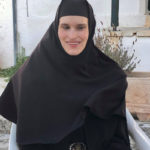
Sister Sidonia Freedman
Sr. Sidonia Freedman is a nun at the Sacred Monastery of St. Nina (Georgian Patriarchate) in the United States, with musicology and medieval studies degrees from St. Olaf College (undergraduate), and the University of Limerick (MA, PhD) where her focus turned towards Orthodox theology with a focus on Georgian polyphonic chant. Despite blindness in both eyes, Sister Sidonia is a highly accomplished lecturer, singer, choir director, and scholar, with numerous publications to her credit (see selected works at academia.edu).
Part III: East Syriac and Georgian Connections
Part I: Chanting Around the Throne of God (Theological and Ritual Perspectives)
Part II: Musical Analysis of the Georgian Trisagion Hymn
We now return to inscriptions and art, which we surveyed in Part I, considering examples in light of their musical significance and surroundings.
About a quarter of extant Trisagion inscriptions, and several of the thrice-holy, occur on engraved or painted tombs. The earliest dated Trisagion in such a setting (ca. 491) was found in the Crimea, and a seventh-century thrice-holy in Sicily was found in conjunction with evidence of Christian funerary feasting and offering (Wilson 2013). Such practices were widespread but became obsolete in certain geographical areas beginning in the fourth century. I have briefly discussed this ritual in a previous paper (Freedman 2017). Recall from Part I that inscriptions of the thrice-holy and the Trisagion on icons, especially on liturgical textiles used in commemorating Christ’s burial, had a musical function. They acted almost in place of recordings, causing readers to audiate, if not to chant aloud, what they read. In icons, these inscriptions also represent the sounds put forth by depicted angelic beings.
Similar inscribed invocations on Georgian icons and church buildings stand in for spoken or sung prayers, continuing to express them in tangible form and cuing others to recite them (Freedman 2019, Trochees). Thus, the inscribed trisagia on tombs reflect the chanting of this same hymn, which would have taken place at the burial procession, as well as at subsequent memorials and lay remembrances.
The lay practice of memorial feasting and chanting of the Trisagion takes place in Svaneti, reflecting early Christian customs. This continuous tradition may be an important factor in the survival of several variants of this chant, while most other ecclesiastical texts do not survive with forms specific to this region (see the above-cited article “Polyphony and Poikilia” for more on Svaneti school chants and vernacular hymns). While inscribed Trisagia are geographically diverse, none seem to be extant in Svaneti or even in Georgia. However, they have perhaps not been felt to be necessary, since living tradition has ensured that it continues to resound through human bodies on site.
A final remark regarding inscriptions of the Trisagion and thrice-holy in all contexts is that they likely had a similar sonic, vocative, and cuing function. Where the shape of the cross is not also inscribed or followed, the Trinitarian hymn may have evoked the symbol and invited readers to inscribe the shape, making the sign upon themselves, as still occurs today when the hymn is chanted, or upon the inscribed object. Scholars have often understood inscriptions as “magical,” which is a difficult and vague term for many reasons (on this point, on the Christianization of symbols, on the cross as the only Christian “amulet,” and on the importance of inscribed Christian invocations, see Bollók 2013). For this context, we consider them to be ritual, theological, and by way of representation, supernatural.
The Trisagion is of particular importance as it is linked to the cross and is a prayer to God, not an ambiguous or idolatrous sign. The apotropaic function of many examples connects not only to prayer but to the cruciform structure seen in the hymn, and perhaps to the scene described in exorcism prayers, which refer to the angelic hosts worshipping God (on this connection, see also Arnold 2014). Other inscribed phenomena, such as retrograde, seen in the seventh-century funerary thrice-holy (Wilson 2013), number ciphers, including a Trisagion (Prentice 1906), and asemantic syllables or seemingly-ambiguous or syncretistic signs (Wilson 2013) can be understood to have various semiotic and artistic functions in light of the accompanying cross or related text, and also in musical terms.
While this correlation is quite clear regarding, for instance, late Medieval Western polyphony, such as works of Guillaume Dufay (Turner 1991; on one view of Georgian comparative polyphony in this respect, see Arom, Scherbaum, and Darras 2018), and Byzantine teretismata (Touliatos 1989), Georgian polyphony has its own nonlexical significative elements, as we began to explore above. On inscribed objects, then, the purpose of a text can become clear if it is understood as symbolizing supernatural sound, or for cuing human participation. On early pendants and other personal artifacts, the thrice-holy or Trisagion occurs alone, among non-Christian symbols, and as may be expected, in depictions of Christ, yet inscribed in various places, such as in the codex that He holds (Herrmann and van den Hoek 2013), and sometimes without angelic figures or names (for an example, see Alföldi and Cruikshank, 1957). In these examples, the chant acts as an eschatological sign, like the cross, and is not linked to a particular figure. The example with Christ’s codex illustrates this point, since that object usually contains His words, as angelic trisagia generally indicate depiction of their song.
Previously, such ambiguously-placed chant texts have been interpreted in different ways. They may be intended to show piety, as John Cotsonis suggests regarding other hymnographic excerpts and images found on seals (2020), or they may demonstrate belief in efficacy of the words themselves, though this has primarily been considered only in a physical sense, e.g. as against grave robbery (Wilson 2013), not against psychological or spiritual evils, nor as a positive form of prayer in a spiritual or theological frame.
While occurrences among non-Christian symbols have been considered syncretistic and magical, there are other possible interpretations. We will see below that the Trisagion and related hymns were understood to indicate the significance even of the shape of the cross, let alone ambiguous symbols. I suggest that in many cases, the inscribed Trisagion or thrice-holy represents the victory over idolatry and the presence of God, of the hymn sounding out amidst spiritual and physical surroundings, rendering other forces and their signs powerless (cf. the cross, as described in St. John Chrysostom, Homilies on Matthew 54) [a translation available here].
The clearly Christian liturgical examples show that the inscriptions represent and help to elicit the prayers of anyone who would observe or make use of the artifacts in question. Furthermore, there may be a theological, ritual function alongside such a practical aid to prayer. The thrice-holy and Trisagion are linked to Christ’s presence made known in the experience of particular saints (Aleksidze 2014), and to all at the Second Coming (cf. a homily attributed to St. Ephrem the Syrian, extant in Greek; McAvoy 2019). Like the cross, which, following patristic injunctions and descriptions (cf. St. Theodore abu Qurrah, Treatise on the Veneration of Icons 24; translated in Griffith 1997, 93-96), has been inscribed on the most basic personal items, such as sixth-eleventh century socks, either of these hymns could be understood as a desire to mark something or someone as being in proximity to, and protected by, God. [for photographs and discussion of these finds, see this blog post by the textile historian Anne Marie Decker:
Funerary contexts have particularly rich significance in this regard, but this article does not have space to explore the theological connections between death, the liturgy, and the eschaton (however, see Rush 1972 and Cattoi 2015). The Trisagion is inscribed on funeral shrouds and headbands in contemporary practice, which clearly links inscribed personal items and liturgical chant. Regarding inscriptions in general, then, studying them as audible, prayerful, theological material can clarify their function, just as analyzing sung Trisagia brought out their shared, underlying geometry.
We conclude with some comments on what the shape, gesture, sound, and their theological symbolism afford in their ritual context inside Georgian churches, according to Georgian and East Syriac art and literary sources.
In Part I, we briefly explored the meaning of the cross in Georgian art and ritual practice. Recent work on liturgical embroidery has uncovered an example that, while not including an inscribed Trisagion, depicts relevant liturgical, musical events in an interesting way, which sheds light on the significance of the cross, of symbols as related to icons, and also of associated liturgical action and sound (photograph from Baratashvili).
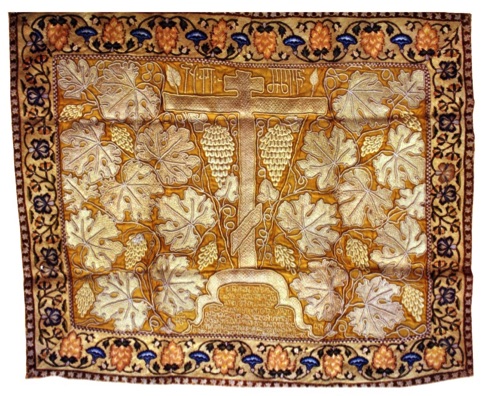
This early eighteenth-century eucharistic veil illustrates a shift to symbolic decoration on such cloths (Baratashvili). [The paper about this aer, translated by Berelashvili, and from which the illustration has been taken, is available here].
Drawing upon the multifaceted significance of the cross, the symbolic program depicts two primary subjects: the Communion of the Apostles, represented by twelve grape clusters, and the apocalyptic worship of the twenty-four elders, symbolized by twenty-four leaves, around the throne of God. Christ as the True Vine, the cross as the tree of life, victory over death, the Theotokos, and martyrdom are also encompassed by the main symbols and those in the frame.
Earlier textiles with icons, such as an early sixteenth-century epitaphios (photograph from Djobadze 1960, 98), are marked by similarly liturgical and theological, rather than narrative and chronological, juxtaposition of scenes (Djobadze 1960).
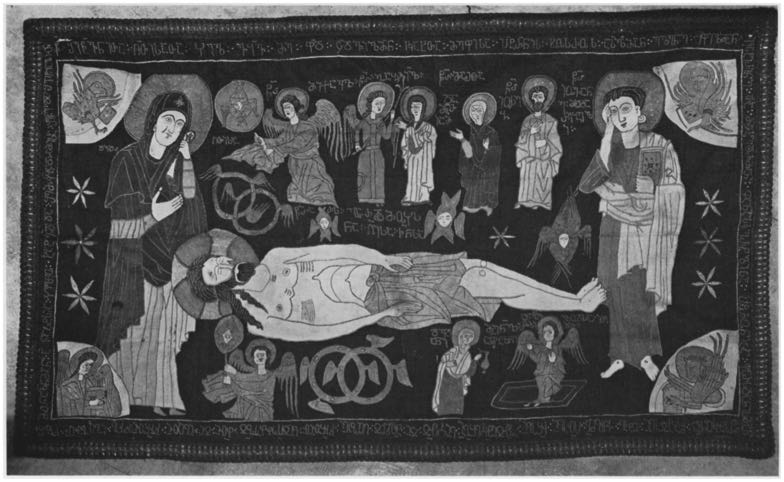
The aforementioned pre-altar crosses and cross painting from Gareji use this same type of scheme. Replacing iconographic figures with symbols allows for powerful depiction of eschatological events within the same register, as on the above chalice veil. The worship of the elders, at which the thrice-holy occurs, and the Communion of the Apostles, are associated with the divine liturgy in which the textile is used.
In icons, such as the aforementioned epitaphios, symbols are incorporated in order to include this eschatological dimension, seven stars in this case. Thus, such textiles provide a theological commentary on the liturgy through nonverbal symbolic language, not unlike musical characteristics and motives analyzed above. While the musical material constitutes human worship, is understood to relate to that of the angels, and provides a means of theological expression, textiles depict the same worship by symbolizing its historical and heavenly counterparts. There is a sort of hierarchy of symbol and icon and of earth and heaven, with symbols representing human beings on textiles, and human beings becoming icons of angels.
It is in singing the Trisagion and thrice-holy that especially this element takes place, as the text of the cherubic hymn states. While the eucharistic rite has been discussed as the primary context for this angelic worship, it equally applies to funeral processions, the Great Doxology, the divine office, monastic cell rules, and lay rituals, such as commemorations of the departed described above. Our discussion of these latter two instances, and their particular means of connecting sound and material objects, drives the concluding section of this article.
We briefly mentioned Georgian pre-altar crosses in Part I, and we will now discuss their use and meaning, as previous authors have focused on iconographic programs and relation to Jerusalem (Bacci 2016), their general characteristics (Gagoshidze 2014), and their possible relation to Syriac, Hagiopolite, and vernacular Georgian practice (Loosley-Leeming 2018). Little has been proposed, however, regarding ritual interaction with, and perception of, these crosses.
I suggest that they functioned as holy places, to which all had access, as the altars behind them are entered only by ordained clergy. They can be approached, touched, and venerated, while providing a visual focus that marks proximity to the altar itself. Some cross examples also include relics, which consecrated altars also contain. Chanters and clergy would have remained in general proximity and would have encountered the cross especially at the entrances described earlier. All would be close to the cross when receiving sacraments.
The many depictions of worship around a cross, such as the textile described in this paper, point to the central role of crosses, both as signs and as liturgical objects. The central place that pre-altar crosses had may be reflected in contemporary vernacular practice, and it may be illustrated in East Syriac monastic writings, which were translated into Georgian and which, in some cases, specifically refer to the thrice-holy and the Trisagion.
The cross-cultural connections between Georgia and Syria can be explored through monastic culture, especially shared literature and practice. Such study also provides insights into perceptions and functions of ritual space, sacred objects, chant, and the synergy thereof. It answers the silence in other types of sources (Loosley-Leeming 2018), and even if music across both cultures is dissimilar or missing from the historical record, the shared uses and ideas about it remain.
Our first author is Sahdona, an East Syrian bishop who was exiled for adhering to the council of Chalcedon and whose importance for Georgian readers is illustrated by a marginal note (Tbilisi Ms A-625) that claims him to be Georgian (Pataridze 2019, 206). Instructing his audience about prayer in the monastic cell and in church, he writes the following in his Book of Perfection:
“Let us, therefore, show awe when we sinners stand in the presence of this Majesty and speak. Even though we are so impure in our deeds he draws us close to the sight of himself in the spirit; let us therefore repeat with trembling the words of the blessed prophet Isaiah: Woe is me, for I am dazed: I am a man of unclean lips, yet my eyes have beheld the King, the Lord Almighty.”
“He can be seen by us in the spirit even now, if we wish–not that he is contained on the throne in any form external to his nature, just filling the Temple with the extremity of his train, as the prophet beheld. No, he is hidden in the loftiness of his hiddenness in the inaccessible light of his nature where he lives and reigns over all the extremities of the universe in the majesty of his dominion, almighty in the power of his word, grasping the round sphere of the earth with all its inhabitants like locusts. In the boundlessness of his Being he is everything, for he is not far away from each one of us, for in him we live and move and have our being·, and while he is in us and in everything, he exists in the majestic glory of his divinity and in his utter exaltedness.”
“His creation is full of the splendour of his glory: the seraphs of fire stand there to honour him, the ranks of the many-eyed cherubim escort His majesty Being, the bands of spiritual powers dash around ministering to him, the throngs of angels fly hither and thither with their wings, and all the orders of spiritual beings serve his Being in awe, crying ‘Holy’ in trembling and love, as they cover their faces with their wings at the splendour of his great and fearful radiance, ceaselessly crying out to one another the threefold sanctification of his exalted glory, saying ‘Holy, holy, holy, Lord Almighty, with whose glories both heaven and earth are full!”
“Let us therefore tremble at the magnitude of the sight of the Ineffable One, and at the sound which ceaselessly utters the praise of the Hidden Being. And let us be filled with awe and trembling, falling on our faces in fear before him” (Brock 1987, 200-201).
He later refers to the church building as “the Jerusalem of light and life … the place where Father, Son, and Spirit dwell, where spiritual beings and the bands of saints together give praise and glory before God in holy fashion” (Brock 1987 215). Chant is an important subject for Sahdona, and his discussion on the proper attitude towards the sound of one’s own voice as it produces “chants that are sweeter than honey” (Brock 1987, 238-239), along with his explanation of the eucharist and the “Jerusalem of light and life (215-216)” show that his description of the awe-inspiring sound, including repetitions of “holy,” in the first passage relates to church music, which is understood to constitute part of the shared angelic and human hymnody around and before the altar.
While extant literary sources seem to say little about the importance of pre-altar crosses, a sense of their powerful significance can be gathered from writings on veneration of a central cross in other contexts. While the Life of St. Nino includes relevant episodes, monastic instructions, with their educational purpose, directly address questions of ritual function and meaning. East Syriac authors often refer to the acts of chanting and making prostrations in front of a cross. Sahdona describes the cross as the place of the shekhina of God (Brock 1995, 56), like the ark of the covenant in the Old Testament. St. Isaac the Syrian dedicates an extensive chapter to an explanation of the nature and power of the cross, given this understanding (Brock 1995, 53-62).
While most of St. Isaac’s ideas show how important and dynamic the cross is in the context of prayer and worship, one point in particular relates to the content of hymnography. He states that, “the moment this form of the Cross is depicted on a wall or on a board, or is fashioned out of some kind of gold or silver and the like, or carved out of wood, immediately it puts on, and is filled with, the divine power which was residing there at the time, and (so) it becomes a place of God’s Shekhina, even more so than in the Ark. … If we attributed any other name to an artifact of this shape, when we worshipped it we would have received punishment as did of old those who exchanged the worship of God for (that of) idols” (Brock 1995, 56).
This striking final statement has implications for the important role of the Trisagion hymn, given its historical background and appearance on crosses as described in Part I. This chant is not only understood as a proper form of invoking God but also as that which clarifies the purpose and meaning of the form of the cross, and by extension, other symbols in the same liturgical surroundings. It supports and situates veneration of the cross.
We can understand Georgian pre-altar crosses not simply as general Christian objects, but as similar in meaning and function to their centrally-placed counterparts in monastic cells as our authors describe (on the same in Coptic and Palestinian monastic settings, see Stewart 2008). Furthermore, with their extensive revetments, and in the context of particular forms of the Trisagion, they constitute veneration of the foundational wooden cross within their construction. Pre-altar crosses, then, are a particularly Georgian form of cross veneration, and musical material is a unique form of Trinitarian worship. Trisagion variants belong to both phenomena, given their structure, content, purpose, and setting.
One final extensive literary passage makes an important link between the Trisagion and its liturgical setting, employing this chant a foundation for sacred art. St. Germanus of Constantinople draws on the iconic and symbolic meaning of the thrice-holy and Trisagion when he uses it as part of his appologia for icon and cross veneration. He describes the chanting of these hymns, quoting the cherubikon, saying that, “”You see how God, incircumscribable by His nature, manifested Himself to our fathers and prophets, patriarchs and kings, in shadows and images, in shadows and riddles, appearing to them according to their measure. Such are the noetic Cherubim mysteriously represented on the earth, and because of this representation the thrice-holy hymn is brought to the thrice-holy and the most holy, consubstantial and life-giving Trinity” (Baranov 2006).
The sonic, tangible icon of the angelic hosts, formed by the worshipping congregation and its chants, is a striking example, functioning like iconophile accounts of icons “not-made-by-hands” (cf. St. John of Damascus, Three Treatises On the Divine Images, translated in Louth 2003, and also here).
A group of worshippers is thus a synergetic icon, made by God, Who created human beings, and participated in by human beings in His image, who respond to Him in song that is understood to have an angelic prototype. The cross is similarly represented by human bodies, linking gesture with sound as a means for iconography, reflecting tangible inscriptions. The cross and the Trisagion are signs of the presence of the Trinity and of the hymnography that addresses Him.
In the first part of this discussion, we considered how the Trisagion hymn developed within varied contexts of biblical interpretation, supplicatory and triumphal processions, Christianization of individuals and nations, theological controversies, and the formation of major rites.
Georgian sources shed some light on the hymn’s history, and the musical characteristics of Georgian variants, in conjunction with depictions on textiles and pre-altar crosses, illustrate its function and meaning. Patristic writings and chant from other cultures support and express the same significance, sometimes in similar ways. However, it appears that symbols, including those in sonic form, have a unique place in Georgian Christian expression and piety. Besides our textile examples, aniconic symbols played an important role in early apse programs, not in opposition to icons but interpreting the significance of sparsely and strategically-placed icons (Skhirtladze 2010).
The same kind of synergy occurs on pre-altar crosses. Chant works in dialogue with such artistic aspects and forms of expression within ritual contexts. Thus, explorations of the music itself, so-called minor arts, and related ritual practices show how the perception and use of symbols, as found in the writings of Ioane P’etrits’i, for example, and the various authors quoted above, has a creative function. Not only does sacred art express theology, but theological experience and perception contribute to the composition and reception of chant and liturgical objects.
The boundary between these art forms breaks down when considering the cross and the Trisagion, and Georgian culture provides rich examples of both. The presence of the enthroned Trinity is acknowledged, pointed to by icon and symbol, and hymned in forms that reflect the shape of His sign and symbolize His ineffable nature. The chant examples represent one voice in a larger polyphonic theological, liturgical context, and we therefore explored them along with sacred objects, especially focusing on crosses, and with extensive passages from homilies and other patristic literary genres.
We conclude with a remark from this third voice, which was said by St. Isaac the Syrian concerning the cross, but which applies to all related phenomena, perceptible to any sense or combination of senses, thus including chant. “Blessed is God who uses corporeal objects continually to draw us close in a symbolic way to a knowledge of His invisible (nature), sowing and marking out in our minds the recollection of His care for us which has been in operation throughout all generations (thus) binding our minds with love for His hidden Being by means of shapes that are visible” (Brock 1995, 62).
* * * * * * * * * * * * * * * * * * * * * * * * * * * * * *
Acknowledgements:
Sister Sidonia Freedman gratefully acknowledges the help and support of her community, and of many colleagues for inspirational discussion and technical assistance on this article including Bruce Beck, Emma Loosley-Leeming, Levan Bitarovi, and John Graham.
Bibliography
Aleksidze, Zaza. “The Visions of Grigor and Sahak Part’ew: Old Georgian Versions and Their Reflection in Georgian Sources.” in The Armenian Apocalyptic Tradition: A Comparative Perspective. Kevork B. Bardakjian and Sergio la Port, eds. (Leiden: Brill Academic Publishers, 2014): 326-340.
Alföldi, Andrew and Erica Cruikshank. “A Sassanian Silver Phalera at Dumbarton Oaks.” Dumbarton Oaks Papers 11 (1957): 237-245.
Andreasen, Nora Mikeladze. Pre-Altar Crosses in Georgia Accessed October 16, 2020. http://www.georgiske-kors.dk.
Arnold, Clinton. The Colossian Syncretism: The Interface Between Christianity and Folk Belief at Colossae (Eugene, OR: Wipf and Stock Publishers, 2014).
Arom, Simha, Frank Scherbaum, and Florent Caron Darras. “Structural Analysis and Modeling of Georgian and Medieval Polyphonies.” 2018. accessed October 16, 2020. https://www.uni-potsdam.de/de/soundscapelab/about-seismosoundscape-lab/people/frank-scherbaum/.
Bacci, Michele. “Echoes of Golgotha: The Iconization of Monumental Crosses in Medieval Svanet’i.” in The Medieval South Caucasus: Artistic Cultures of Albania, Armenia, and Georgia. Ivan Foletti and Erik Thunø, Eds. (Turnhout: Brepols Publishers, 2016): 206-225.
Baranov, Vladimir A. “Instrument of Death and Tree of Life: Visual Meanings of the Cross in Some Late Antique and Byzantine Monumental Programs.” Scrinium 11 (2015): 22-48.
————. “Unedited Slavonic Version of the Apology on the Cross and on the Holy Icons Attributed to Patriarch Germanus of Constantinople (CPG 8033).” Scrinium 2 (2006): 7-40.
Baratashvili, Gulnaz and Eka Berelashvili. “Iconographic Peculiarities of the Aer of Princess Tamara.” Accessed October 16, 2020. https://www.academia.edu/33388520/Aer_of_Princes_Tamara.
Barber, Charles. “From Transformation to Desire: Art and Worship after Iconoclasm.” The Art Bulletin 75 (1993): 7-16.
Beck, Bruce. “‘When Shall I Come and See the Face of God?’: The Exegetical and Historical Genesis of the Trisagion Hymn.” Greek Orthodox Theological Review 56 (2011): 347-375.
Berelashvili, Eka. “Some Artistic Aspects of Late Medieval Georgian Mitres.” Kadmos 4 (2012): 7-36.
Bollók, Adam. “Apotropaion and Burial in Early Byzantium: Some Preliminary Considerations.” in Byzanz und das Abendland: Begegnungen zwischen Ost und West (Budapest: Eötvös József Collegium, 2013): 227-241.
Brock, Sebastian P., Trans. Isaac of Nineveh (Isaac the Syrian), The Second Part, Chapters IV-XLI (Louvain: Peeters Publishers, 1995).
—————. The Syriac Fathers on Prayer and the Spiritual Life (Kalamazoo, MI: Cistercian Publications, 1987).
Cattoi, Thomas. “Liturgy as Cosmic Transformation.” in The Oxford Handbook of Maximus the Confessor. Pauline Allen and Bronwen Neil, Eds. (Oxford: Oxford University Press, 2015).
Cotsonis, John A. The Religious Figural Imagery of Byzantine Lead Seals I: Studies on the Image of Christ, the Virgin and Narrative Scenes (New York: Routlege, 2020).
—————. The Religious Figural Imagery on Byzantine Lead Seals II: Studies on Images of the Saints and on Personal Piety :New York: Routledge, 2020).
Daley, Brian E. Light on the Mountain: Greek Patristic and Byzantine Homilies on the Transfiguration of the Lord (Crestwood, NY: St. Vladimir’s Seminary Press, 2013).
Decker, Anne Marie. “Medieval Nubian Nalbinding in Sudan.” Nalbound. accessed October 16, 2020. https://nalbound.com/2020/01/02/medieval-nubian-nalbinding-in-sudan/..
Djobadze, Wachtang Z. “Notes on Georgian Minor Art of the Post-Byzantine Period.” The Journal of the Walters Art Gallery 23 (1960): 97-117.
Dolidze, Tina. “Overview of the Georgian Research into Byzantine and Medieval Georgian Patristic Theology.” Phasis 15-16 (2013): 397-426.
————-. “Patristics–As Reflected in Georgian Spiritual and Intellectual History.” in Patristic Studies in the Twenty-First Century: Proceedings of an International Conference to Mark the 50th Anniversary of the International Association of Patristic Studies. Bruria Bitton-Ashkelony, Theodore de Bruyn, and Carol Harrison, Eds. (Turnhout: Brepols Publishers, 2015): 497-519.
Downey, Glanville. “A Processional Cross.” The Metropolitan Museum of Art Bulletin 12 (1954): 276-280.
Elliott, Thomas George. “Constantine’s Explanation of His Career.” Byzantion 62 (1992): 212-234.
Freedman, Novice Nicoletta. “‘Everything is to Glorify Christ’: Liturgical Creation in Svan Religious Folk Song and Practice.” in Proceedings of the Sixth Conference of the International Society for Orthodox Church Music. Ivan Moody and Maria Takala-Roszcenko, Eds. (Joensuu: Joensuu Theological Centre, 2017): 369-389.
Freedman, Nun Sidonia. “Polyphony and Poikilia: Theology and Aesthetics in the Exegesis of Tradition in Georgian Chant.” Religions 10 (2019): 402.
———————. “Trochees, Textiles, and Triptychs: Theology, Patterns, and Synergy in Music and Liturgy.” in Proceedings of the Seventh Conference of the International Society for Orthodox Church Music. Ivan Moody and Maria Takala-Roszcenko, Eds. (Joensuu: Joensuu Theological Centre, 2019).
Gagoshidze, Giorgi. “Jerusalem in Medieval Georgian Art.” in Visual Constructs of Jerusalem. Bianca Kühnel, Galit Noga-Banai, and Hanna Vorholt, Eds. (Turnhout: Brepols Publishers, 2014): 133-138.
——————. “Katskhi Pillar.” Collectanea Christiana Orientalia 12 (2015): 287–306.
Gigineishvili, Levan. “Ioane Petritsi’s Preface to His Annotated Translation of the Book of Psalms.” in Georgian Christian Thought and Its Cultural Context. Tamar Nutsubidze, Cornelia B. Horn, and Basil Lourié, Eds. (Leiden: Brill Academic Publishers, 2014): 194–235.
Griffith, Sidney H. Trans. A Treatise on the Veneration of the Holy Icons Written in Arabic by Theodore Abū Qurrah (Louvain: Peeters Publishers, 1997).
Herrmann, John and Annewies van den Hoek. “Apocalyptic Themes in the Minor and Monumental Art of Early Christianity.” in Pottery, Pavements, and Paradise: Iconographic and Textual Studies on Late Antiquity (Leiden: Brill Academic Publishers, 2013): 327-382.
Hunter-Crowley, Heather. “The Cross of Light: Experiencing Divine Presence in Byzantine Syria.” in Experiencing Byzantium: Papers from the 44th Spring Symposium of Byzantine Studies. Claire Nesbitt and Mark Jackson, Eds. (New York: Routledge, 2016): 191-210.
Janeras, Sebastià. “Le Trisagion: Une Formule Brève en Liturgie Comparée.” Orientalia Christiana Analecta 265 (2001): 495-562.
Karim, Armin. “The Meaning of the Trisagion in East and West.” in Chant and Culture: Proceedings of the Conference of the Gregorian Institute of Canada, August 6-9, 2013. Armin Karim and Barbara Swanson, Eds. (Lions Bay, BC: Institute of Mediaeval Music, 2014): 23-39.
Kiley, Mark et al. Prayer from Alexander to Constantine: A Critical Anthology (New York: Routledge, 1997).
Kuehn, Clement A. and John E. Baggarly, Eds and Trans. Anastasius of Sinai: Hexaemeron. Orientalia Christiana Analecta 278 (2007).
Lang, David M. Lives and Legends of the Georgian Saints (London: Mowbrays Publishers, 1976).
Longenecker, Bruce W. The Cross Before Constantine: The Early Life of a Christian Symbol (Minneapolis, MN: Augsburg Fortress Publishers, 2015).
Loosley-Leeming, Emma. Architecture and Asceticism: Cultural Interaction Between Syria and Georgia in Late Antiquity (Leiden: Brill Academic Publishers, 2018).
Louth, Andrew, Trans. St. John of Damascus: Three Treatises on the Divine Images (Crestwood, NY: St. Vladimir’s Seminary Press, 2003).
McAvoy, Shawn. Evolution of an Eschaton: An Analysis of On the Antichrist (CPG 3496) Attributed to Efrem the Syrian. Ph.D. Diss., Arizona State University, 2019.
McCollum, Adam. “Syro-Georgian Trisagion.” hmmlorientalia. Accessed October 16, 2020. http://hmmlorientalia.wordpress. com/2013/10/24/syrogeorgian-trisagion/.
Mengozzi, Alessandro and Luca B. Ricossa. “Folk Spontaneity and Pseudo-Teretismata in East-Syriac Soghiyāthā: Resurrection, Joseph and His Mistress, ‘Tell me Church!’, Moses and Jesus, and Great Rome.” in Христианский Восток 6 (2013): 162-180.
Mirianashvili, Lado. “Theological Content of a Mural in a Church of the
Tetri Udabno Monastery of Gareji.” in Davit Gareji–Multidisciplinary Study and Development Strategy (Tbilisi: 2020): 108-113.
Olkinuora, Fr. Damaskinos. “Singing of Divine Identities in a Liturgical Space: John Damascene’s Treatise on the Trisagion and His Anti-heretical Polemics.” Approaching Religions 8 (218w: 17-26.
Pataridze, Tamara. “Christian Literature in Arabic in the Early Islamic Period (8th-10th C.): The Circulation of Texts and Ideas Between the Greek, Syriac, Arabic, and Georgian Communities.” Le Muséon 132 (2019): 199-222.
—————–. “La Version Géorgienne d’une Homélie de Jaques de Saroug Sur la Nativité. Étude et Traduction.” Le Muséon 121 (2008): 373-402.
Prentice, William K. “Magical Formulae on Lintels of the Christian Period in Syria.” American Journal of Archaeology 10 (1906): 137-150.
Pritula, Anton. “A Hymn on Tiflis from Wardā Collection: A Transformation of the Muslim Conquerors into Pagans.” in Caucasus During the Mongol Period–Der Kaukasus in der Mongolenzeit. Jürgen Tubach, Sophia Vashalomidze, and Manfred Zimmer, Eds. (Wiesbaden: Reichert Verlag, 2012). 217-237.
Rush, Alfred C. “Death as a Spiritual Marriage: Individual and Ecclesial Eschatology.” Vigiliae Christianae 26 (1972): 81-101.
Schaff, Philip, Ed. Early Church Fathers. Christian Classics Ethereal Library. Accessed October 16, 2020. https://www.ccel.org/fathers.html.
Shughliashvili, Davit. “Shesvladi (Introit) in Georgian Ecclesiastical Chanting.” in Proceedings of the Third International Symposium on Traditional Polyphony. Rusudan Tsurtsumia and Joseph Jordania, Eds. (Tbilisi: Tbilisi State Conservatoire, 2007): 475-484.
Skhirtladze, Zaza. “The Oldest Murals at Oshki Church: Byzantine Church Decoration and Georgian Art.” Eastern Christian Art 7 (2011): 97-134.
Smith, Joseph P., Trans. St. Irenaeus: Proof of the Apostolic Preaching (London: Newman Press, 1952).
Steenberge, Laura. “We Who Musically Represent the Cherubim.” in Aural Architecture in Byzantium: Music, Acoustics, and Ritual. Bissera Pentcheva, Ed. (New York: Routledge, 2017): 143-162.
Stewart, Columba. “The Practices of Monastic Prayer: Origins, Evolution, and Tensions.” in Living for Eternity: The White Monastery and its Neighborhood. Proceedings of a Symposium at the University of Minnesota, Minneapolis, March 6-9, 2003. Philip Sellew, Ed. (2003): 97-108.
Touliatos, Diane. “Nonsense syllables in the music of the ancient Greek and Byzantine traditions.” Journal of Musicology 7 (1989): 231-243.
Turner, Charles. “Proportion and Form in the Continental Isorhythmic Motet c. 1385-1450.” Music Analysis 10 (1991): 89-124.
Wanek, Nina-Maria. “The Greek and Latin Cherubikon.” Plainsong & Medieval Music 26 (2017): 95-114.
Weitzmann, Kurt, and Ihor Ševčenko. “The Moses Cross at Sinai.” Dumbarton Oaks Papers 17 (1963): 385-398.
Wickes, Jeffrey T., Trans. St. Ephrem the Syrian: The Hymns on Faith (Washington, D.C.: Catholic University of America Press, 2015).
Wilson, Roger J. A. “An Unusual Early Byzantine ‘Thrice-Holy’ Inscription and Accompanying Design from Punta Secca, Sicily.” Phoenix 67 (2013): 163-181.
Wardrop, Marjory, Trans. Life of St. Nino (Piscataway, NJ: Gorgias Press, 2006).
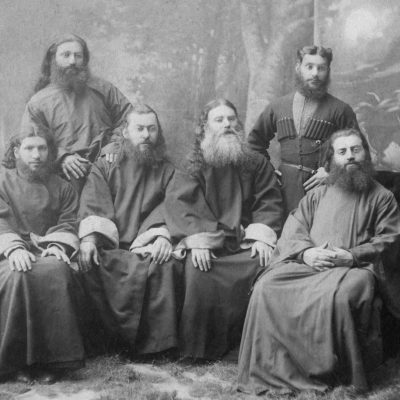
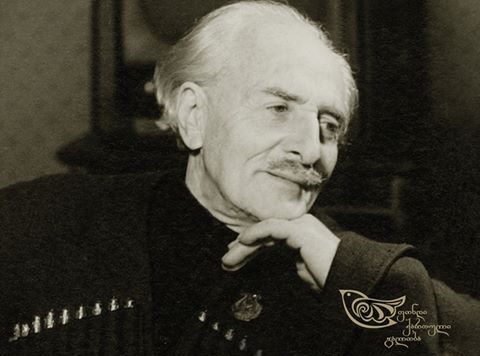
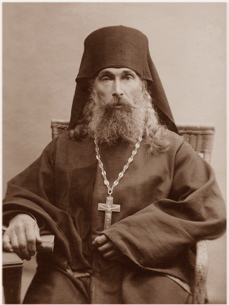
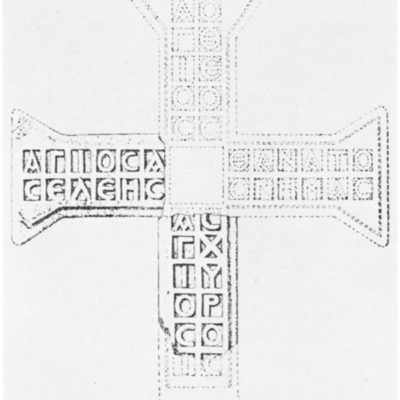
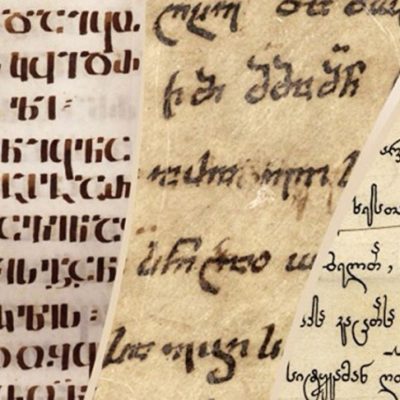
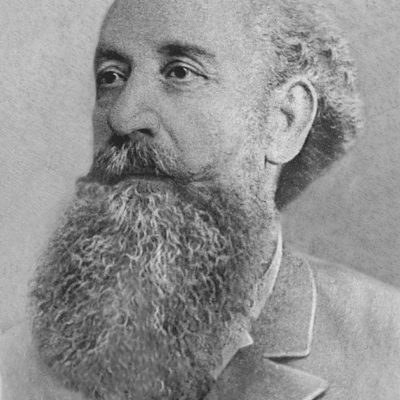
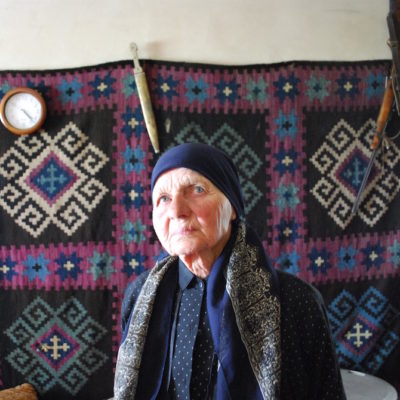

Leave a Reply